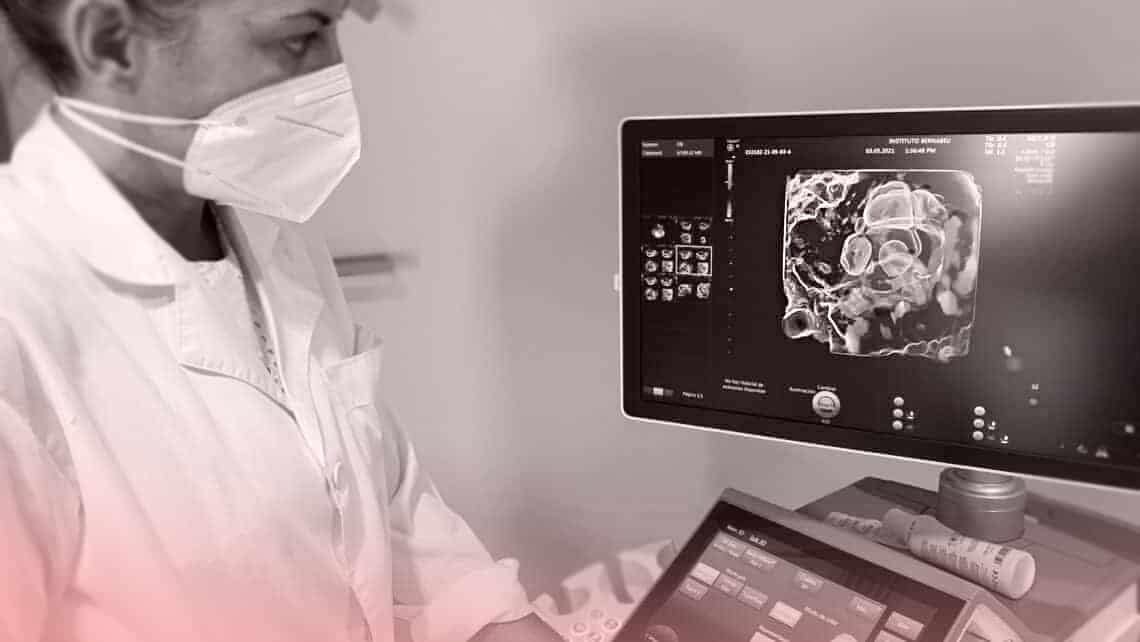
Ovarian Reserve: How many eggs do I have left to become a mother?
Reproduction in mammals, and therefore in humans, requires oocytes and sperm, each contributing with the parent’s genetic load.
Sperm are made in the testes, but not before puberty. This means that, if we analysed the structure of the infantile testicle, we would observe a total lack of them.
From puberty the testicle acquires the ability to generate and release them in ejaculation. Although their number decreases and the percentages of abnormal sperm increase with advancing age, testicular activity will not cease, ejaculate or not, unless there are diseases.
This way, a male produces trillion of his reproductive cells throughout his life.
The case of women is the opposite: all of her reproductive cells, the oocytes, can only be generated before being born in the womb of her mother.
Índice
When are the oocytes (eggs) are created?
The ovaries of the human embryo begin the maturation processes around the 6th week of pregnancy, which leads them to produce oocytes (eggs) from the 12th week of gestation. In those weeks the activity is frantic. It goes from containing none to reaching a maximum between 5 and 6 million just 11 or 12 weeks later, around the 22nd week of gestation. From that moment on, the production of new eggs will cease forever and completely. For this reason, the ovarian reserve, that is to say the total number of eggs that the future woman will have, is fixed before birth and will decrease as time passes.
How do they run out?
Around birth, its number has dropped to 2 million and during childhood it continues to decline, leaving between 400,000 and 500,000 at the time of puberty. When it starts to release with ovulations. Completely exhausting around the age of 50, when menopause hits.
In the ovary, oocytes of different biological qualities will coexist and, in natural order, the ovary will offer them following a very logical order: The best will be released first, leaving for the end of the reproductive life the less efficient ones.
This clearly explains why a teenage pregnancy, so often unwanted, is so much easier. And why the percentages of miscarriages and chromosomal abnormalities are so low at these ages.
After the age of 35, the reproductive biological clock does not keep pace with the optimal quality of life enjoyed by the rest of our body. The decrease in fertility is accompanied by a gradual increase in the probability of abortion, being at 40 years in 40% of pregnancies, also accompanied by a constant increase in the risk of giving birth children affected by chromosomopathy. The most common is the trisomy that affects chromosome 21, Down syndrome.
We must point out that every day in a woman’s reproductive life – whether or not she is using oral contraceptives, vaginal rings or intrauterine devices, the variability of menstrual days or the months she has been pregnant – eggs are constantly lost. Of the total of 500,000 at the beginning of puberty only 0’005% will fully mature and be ovulated. The rest await either atresia (the blockage in their development) or follow the path of programmed cell death (apoptosis).
Can new oocytes be produced?
We must insist that despite different lines of ongoing research, it is not possible to make the ovary produce new oocytes. We will have to assume that those that remain at the time of the search for natural pregnancy or the beginning of an assisted reproduction treatment will condition the percentage of successes.
At the Instituto Bernabeu Low Ovarian Reserve Treatment Unit, we have adopted different experimental reactivation strategies to “awaken the sleeping oocytes” and thus achieve a greater number in the ovarian stimulation process of In Vitro Fertilization, including the administration to the ovary of platelet-rich plasma (PRP) and in case of ovarian failure, ovarian activation by fragmentation and autotransplantation of the ovarian cortex.
At present in Spain and the surrounding countries, the moment to gestate is constantly delayed. One in every 3 Spanish women will begin to seek pregnancy from the age of 35. When in many of them the ovaries have already released the best eggs. Which partly explains the increase in cases of difficulty conceiving.
From the age of 40, the chances of gestating with your own oocytes (ovules) are dramatically reduced. This forces in many cases to consider other therapeutic options, the most common being the anonymous donation of eggs by a younger woman with biologically much more competent eggs.
The own eggs preservation by freezing them in youth, offers the opportunity to extend the reproductive life beyond the 40 years. Well, once frozen, they can be kept for years without losing their reproductive capabilities. Thus, prolonging the women fertile period, even beyond menopause.
Dr Rafael Bernabeu, Medical Director at Instituto Bernabeu.
